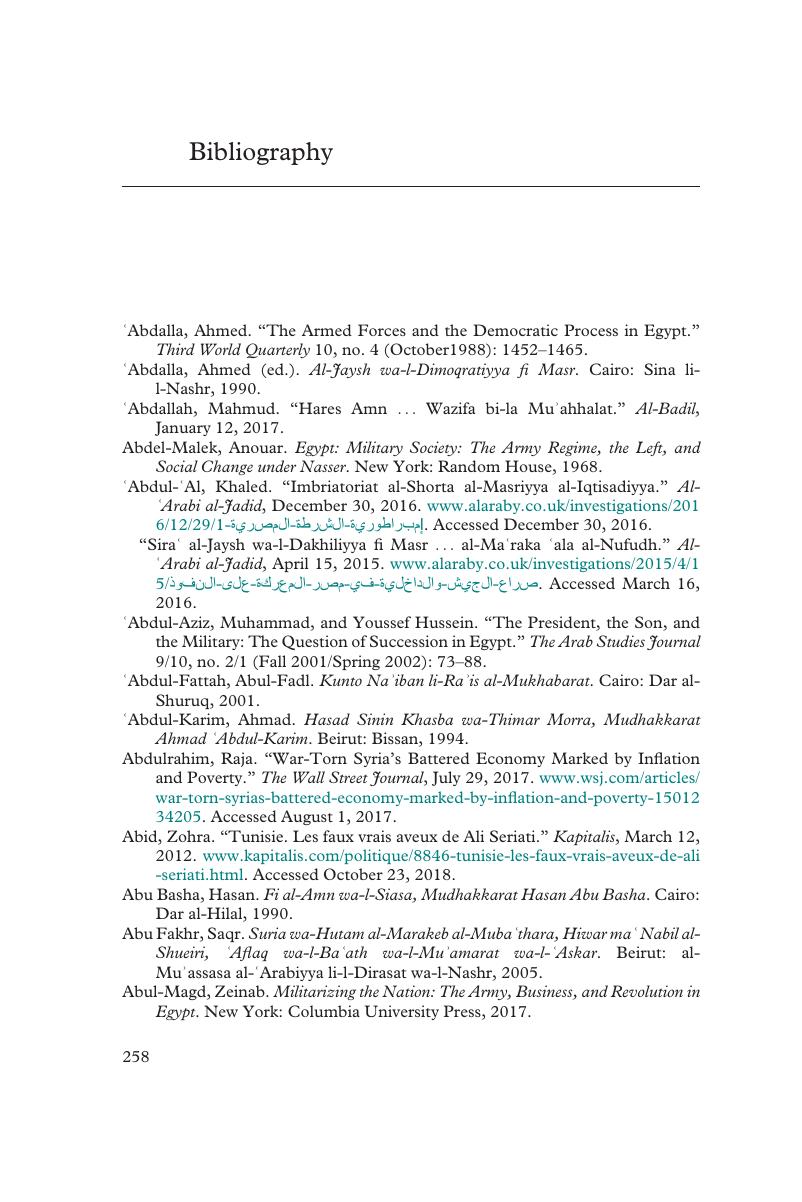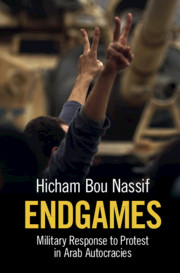Book contents
- Endgames
- Endgames
- Copyright page
- Dedication
- Epigraph
- Contents
- Tables
- Acknowledgments
- Introduction
- 1 Coups, Coup-Proofing, and Military Politics in Endgames
- 2 Coups, Coup-Proofing, and Regime Formation in Egypt and Syria
- 3 Coups, Coup-Proofing, and the Neoliberal Age in Egypt and Syria
- 4 How Coup-Proofing Structured Military Response to Protest in Egypt and Syria
- 5 How Coup-Proofing Structured Military Response to Protest in Tunisia and Libya
- Conclusion
- Bibliography
- Index
- References
Bibliography
Published online by Cambridge University Press: 15 September 2020
- Endgames
- Endgames
- Copyright page
- Dedication
- Epigraph
- Contents
- Tables
- Acknowledgments
- Introduction
- 1 Coups, Coup-Proofing, and Military Politics in Endgames
- 2 Coups, Coup-Proofing, and Regime Formation in Egypt and Syria
- 3 Coups, Coup-Proofing, and the Neoliberal Age in Egypt and Syria
- 4 How Coup-Proofing Structured Military Response to Protest in Egypt and Syria
- 5 How Coup-Proofing Structured Military Response to Protest in Tunisia and Libya
- Conclusion
- Bibliography
- Index
- References
Summary

- Type
- Chapter
- Information
- EndgamesMilitary Response to Protest in Arab Autocracies, pp. 258 - 287Publisher: Cambridge University PressPrint publication year: 2020



